
You Can't Make This Stuff Up: The Complete Guide to Writing Creative Nonfiction--From Memoir to Literary Journalism and Everything in Between
by
Lee Gutkind
Published 13 Aug 2012
But that term led to debate about the use of the word “new.” A.J. Liebling, George Orwell, James Baldwin, and Lillian Ross, to name only a few masters of the literature of reality, were publishing their work a half century before Tom Wolfe—so what was new about the “new journalism”? Recently the word “narrative”—as in “narrative journalism” and “narrative nonfiction”—has gained popularity. Everyone has personal stories or narratives: politicians, movie stars, businessmen and women. Yet creative nonfiction does not strictly adhere to one narrative form; there’s the lyric essay, the segmented essay, and the prose poem, all of which can be nonfiction.
…
See Master of Fine Arts (MFA) degree programs Michener, James Mid-Atlantic Creative Nonfiction Summer Writers’ Conference Midnight in the Garden of Good and Evil (Berendt) Miller, Arthur A Million Little Pieces (Frey) 60 Minutes (television program) Misha (Defonseca) Mitchell, Margaret Moore, Dinty W. Moore, Michael Morris, Edmund My Life (Clinton) Naked (Sedaris) Names, changing Narrative, parallel. See also Frame Narrative historians, recreation and Narrative journalism Narrative line Narrative nonfiction Narrator, trustworthiness of Nasar, Sylvia Nasdijj Nash, John National Book Award National Book Critics Awards National Endowment for the Arts Navel gazing New journalism The New Journalism (Wolfe) New Republic (magazine) Newsday (newspaper) Newspapers, reading Newsweek (magazine) The New Yorker (magazine) creative nonfiction in DeLillo article in Malcolm and McPhee and New York Herald Tribune (newspaper) New York (magazine) New York Observer (newspaper) New York Post (newspaper) New York Times Book Review (periodical) New York Times Magazine New York Times (newspaper) creative nonfiction in hoaxes and recreation and The Next American Essay (D’Agata) Nick Adams Stories (Hemingway) Nickel and Dimed (Ehrenreich) Nixon (film) Norton Note-taking Novels Nuland, Sherwin Nutmeg (Nathaniel) Obama, Barack Objectivity, creative nonfiction and Ohio University O magazine O’Malley, Walter The Omnivore’s Dilemma (Pollan) On Death and Dying (Kübler-Ross) One Children’s Place (Gutkind) One-on-one interviews On Looking (Purpura) On the Road (Kerouac) Opening paragraphs Opening Skinner’s Box (Slater) Oranges (McPhee) The Orchid Thief (Orlean) Orlean, Susan Orwell, George Other Press O’Toole, Peter Outlines Out of Africa (Dinesen) Page, P.
…
There are many wonderful books of creative nonfiction that are dramatically, stylistically, rhythmically powerful and factually accurate that have made a difference, some of which are excerpted or discussed here—from Rebecca Skloot’s The Immortal Life of Henrietta Lacks, most recently, to Susan Sheehan’s Pulitzer Prize–winning Is There No Place on Earth for Me? We could all make such a list of books and writers whose spellbinding narrative nonfiction has helped influence public opinion while remaining true to fact: Rachel Carson, John Hersey, Ernest Hemingway, Ernie Pyle. They were all reporters. Not D’Agata, who tells Fingal, “I am not a reporter and I have never claimed to be a reporter.” This maybe true, on a certain level, but it is nevertheless a ridiculous claim: all nonfiction contains a significant amount of reportage.

Good Prose: The Art of Nonfiction
by
Tracy Kidder
and
Richard Todd
Published 15 Jan 2013
It thus becomes an unexalted endeavor. And yet strangely enough the essay is an outsider’s genre. Essays tend to be critical, subversive of something or other, even if it is just the latest fashion in sunglasses. In the family of writers, essayists play poor cousins to writers of fiction or narrative nonfiction. But great things have been accomplished in essays, which are the natural medium of ideas. Essays yield many of the nuggets of wisdom that inform everyday life, including the one line of Emerson’s that everyone knows: “A foolish consistency is the hobgoblin of little minds.” This observation, the schoolboy’s friend, might also serve as a credo for the essayist.
…
As for the full-blown exteriors that survive, the trick, we say, is to serve them up when a reader can be expected to want texture and context, or a break from the main story—that is, when the story would otherwise take on the tiresomeness of an excessively linear, one-thing-after-another narrative. An exterior should of course be interesting in itself. Like everything in a book of narrative nonfiction, it ought to serve at least two purposes, preferably unstated. Sometimes parts of a story have to be “floated.” This is short for “floated in time.” You want, for instance, to describe the daily routine of a teacher, but you want to draw on observations that you made over many days. Perhaps many parts of many days were boring, but you never want to commit the imitative fallacy.

The Taking of Getty Oil: Pennzoil, Texaco, and the Takeover Battle That Made History
by
Steve Coll
Published 12 Jun 2017
After the court hearing in White Plains, N.Y., where Texaco’s bankruptcy judge, Howard Schwartzberg, pronounced his final blessing on Pennzoil’s unprecedented award, the dog-faced Liedtke stood before the courtroom’s jury box for a few moments and reflected on his accomplishment. “It hasn’t exactly been pleasant over these last four years,” Liedtke said. “But it was something that had to be done.” Bibliographical Note The use of recollected and reconstructed dialogue in works of narrative nonfiction, while increasingly widespread, is in many ways problematic. First off, there is, or should be, the question of accuracy. In the absence of verbatim transcripts or detailed, contemporaneous notes, it is impossible for any journalist to recreate precisely a conversation that occurred outside his earshot months or years in the past.
…
He is writing journalism, not a novel, and not a “docudrama,” that insipid and deceptive television hybrid. Theodore Dreiser, in thinking about a sensational murder case of his day, decided that the basic facts would make for a story of tremendous resonance. So he wrote An American Tragedy, a novel. If he had lived in our time, he might well have written a work of narrative nonfiction, complete with reconstructed dialogue, and then sold the miniseries rights to one of the networks. So the author has to make choices. They are not easy, but it is important to think them through. And it seems to me that if a journalist decides, as I have, to employ reconstructed dialogue in the text of his narrative, then he has redoubled his obligation to the reader.
…
Where did this dialogue come from? Who remembered it that way? What contemporaneous and documentary evidence is there to support the recollection? What rules did the author follow with sources? What standards did the author adhere to in the writing? What is surprising about contemporary works of narrative nonfiction, many of them written by excellent journalists, is that authors so rarely answer these questions for the reader, and if they do, their answers are sometimes appalling. There are prominent journalists who do not disclose in their books that they have made contractual arrangements with sources to share in the profits from publication and future sale to the movies.
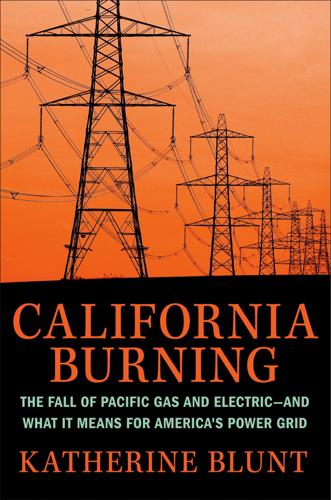
California Burning: The Fall of Pacific Gas and Electric--And What It Means for America's Power Grid
by
Katherine Blunt
Published 29 Aug 2022
Special thanks to Rebecca Elliott, Lindsay Ellis, Karine Semple, Brian Rosenthal, Brad Gowland, Michael Bodley, Rebecca Davis-O’Brien, Chris Matthews, Collin Eaton, and Sean Gryger. And, of course, thank you to my parents, Rob and Margaret, and my sister, Julianne, for your love and support. A Note on Sourcing This book is a work of narrative nonfiction, informed by more than two hundred interviews with former PG&E executives, employees, and consultants, as well as California regulators, politicians, and attorneys, conducted over the course of three years. I interviewed some while reporting on PG&E for The Wall Street Journal; much of our work is included in the citations.
…
I feel so fortunate to have worked with Portfolio, which invested in bringing this book to fruition. Thank you to Adrian Zackheim and the rest of the team for supporting my vision for it. My editor, Trish Daly, made the narrative immeasurably better with thoughtful questions and suggestions. Thank you. A nonfiction book, like any work of narrative journalism, is only as good as its sources. Thank you to the dozens of former employees, regulators, and consultants who talked with me about PG&E. Your stories, memories, and perspectives added so much context and color. This is in no way a simple story, and each of you helped me bring it to life with fairness and accuracy.
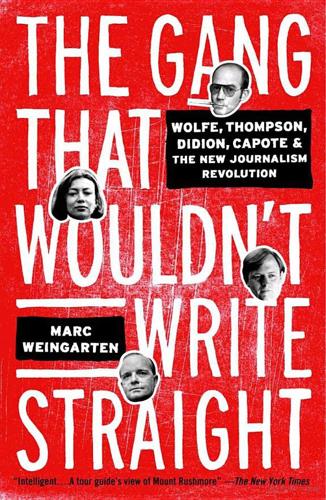
The Gang That Wouldn't Write Straight: Wolfe, Thompson, Didion, Capote, and the New Journalism Revolution
by
Marc Weingarten
Published 12 Dec 2006
Many years later Shawn would still rue the day he gave the green light to Capote’s notion. THE GREAT AMERICAN MAGAZINE “Tiny Mummies” notwithstanding, there was a time when Clay Felker worshiped The New Yorker. In the forties, when Felker was in high school, The New Yorker was word-perfect, everything he could ever ask for in a magazine. The narrative nonfiction of Hersey, Ross, Liebling, and other New Yorker contributors represented the apex of creative journalism, the way good stories should be written. It was also a literary refuge from the local newspapers, which he found intellectually listless and uninspired. Growing up in Webster Groves, Missouri, an affluent bedroom suburb ten miles southwest of St.
…
The art of narrative storytelling is alive and well; it’s just more diffuse now, spread out across books, magazines, newspapers, and the Web. There are great immersive reporters such as Ted Conover, who posed as a corrections officer in Sing Sing prison and wrote an award-winning book about it called Newjack. Jon Krakauer accompanied a mountaineering expedition to Mount Everest on assignment from Outside magazine and produced a narrative nonfiction classic, Into Thin Air. Barbara Ehrenreich posed as a domestic laborer and told the hard-luck stories of her fellow workers in Nickel and Dimed: On (Not) Getting By in America. Other best-selling books such as The Orchid Thief, Random Family, Moneyball, American Ground—riveting stories buttressed by meticulous reporting, full-bodied character development, and flat-out great writing-are the children of Dispatches, The Electric Kool-Aid Acid Test, and Armies of the Night.
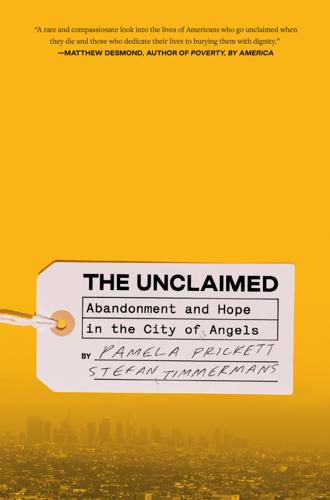
The Unclaimed: Abandonment and Hope in the City of Angels
by
Pamela Prickett
and
Stefan Timmermans
Published 11 Mar 2024
The Dead Don’t Vote 9. A Calling 10. Steel and Sassafras 11. Standing in the Gap 12. Presente EPILOGUE: The Kindness of Clay Afterword: Memento Mori About This Project Acknowledgments Notes Index _146428706_ AUTHORS’ NOTE .. This is a work of narrative nonfiction. Dialogue and events were witnessed firsthand or reconstructed based on interviews, archives, and published accounts. The unclaimed are all too soon forgotten. Out of respect for their lives, we use the names they went by; to mask their identities would mean complicity in a double erasure.
…
GO TO NOTE REFERENCE IN TEXT many relationships had completely unraveled Kylie Agllias, “The Gendered Experience of Family Estrangement in Later Life,” Affilia-Journal of Women and Social Work 28 (August 2013): 309–21; Keith Berry and Tony E. Adams, “Family Bullies,” Journal of Family Communication 16 (2016): 51–63; Kristina M. Scharp and Lindsey J. Thomas, “Family ‘Bonds’: Making Meaning of Parent–Child Relationships in Estrangement Narratives,” Journal of Family Communication 16 (2016): 32–50; Lucy Blake, “Parents and Children Who Are Estranged in Adulthood: A Review and Discussion of the Literature,” Journal of Family Theory and Review 9 (2017): 521–36. GO TO NOTE REFERENCE IN TEXT more than 40 percent Richard P. Conti, “Family Estrangement: Establishing a Prevalence Rate,” Journal of Psychology and Behavioral Science 3 (2015): 28–35.
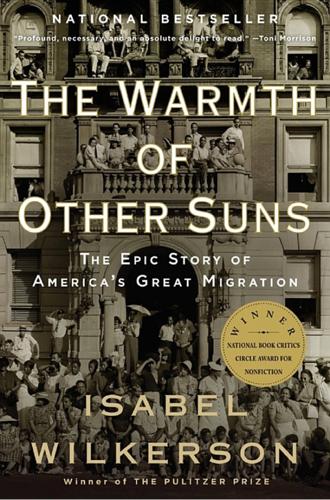
The Warmth of Other Suns: The Epic Story of America's Great Migration
by
Isabel Wilkerson
Published 6 Sep 2010
During the course of the research, I was fortunate to have been able to rely on support from a fellowship from the John Simon Guggenheim Foundation; an Edith Kreeger Wolf endowed lectureship at Northwestern University; a semester as Ferris Professor of Journalism at Princeton University; and various lectures and seminars I delivered at such places as Brown University, the Nieman Foundation at Harvard University, the narrative journalism conference in Aarhus, Denmark, the University of Nevada at Reno, the University of Mississippi at Oxford, and, for three years, as the James M. Cox Professor of Journalism at Emory University. I am grateful to Boston University, where I now am on faculty, for its role in promoting narrative nonfiction such as this book and for the support of David Campbell, Thomas Fiedler, Louis Ureneck, Mitchell Zuckoff, Robert Manoff, Richard Lehr, Robert Zelnik, Caryl Rivers, Safoura Rafeizadeh, and James Brann.
…
She won the George Polk Award for her coverage of the Midwest and a John Simon Guggenheim Fellowship for her research into the Great Migration. She has lectured on narrative writing at the Nieman Foundation at Harvard University and has served as Ferris Professor of Journalism at Princeton University and as the James M. Cox Jr. Professor of Journalism at Emory University. She is currently Professor of Journalism and Director of Narrative Nonfiction at Boston University. During the Great Migration, her parents journeyed from Georgia and southern Virginia to Washington, D.C., where she was born and reared. This is her first book.
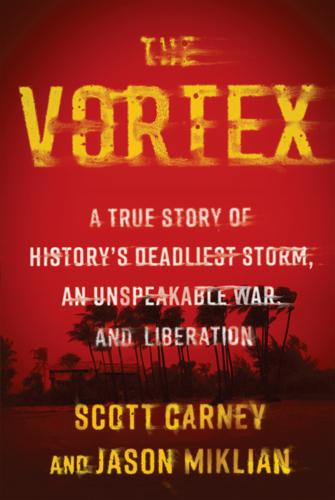
The Vortex: A True Story of History's Deadliest Storm, an Unspeakable War, and Liberation
by
Scott Carney
and
Jason Miklian
Published 28 Mar 2022
Some documents, like Yahya Khan’s service record, are presented here publicly for the first time. These sources helped contextualize our characters’ experiences and validate the stories we collected from eyewitnesses. For ease of reading, we do not employ in-text citations. Instead, we present the reference section in endnotes, noting the relevant text. This book is a work of narrative nonfiction. While all details herein are true and research-based, the act of putting disparate pieces together in a way that puts the reader in the historical moment required us to make judgments at times about motivations and states of mind that are not preserved in the historical record. In some places, we condensed timelines, dialogues, competing perspectives, and peripheral details for clarity and to better bring out the essence of the events.
…
We cite additional sources used in their corresponding chapters in our references. That said, compiling events from primary and secondary sources as well as the recollection of various witnesses can make it hard to tell history in a coherent way. This is the difficult terrain of any work of narrative nonfiction. Therefore, we mark the places where we truncated timelines that took place over longer periods and instead condensed them into a matter of hours or days. Further, in a handful of places we used composite scenes to draw out the essence of someone’s experience and character more quickly instead of narrating a series of different events that occurred over several months in bits and pieces.
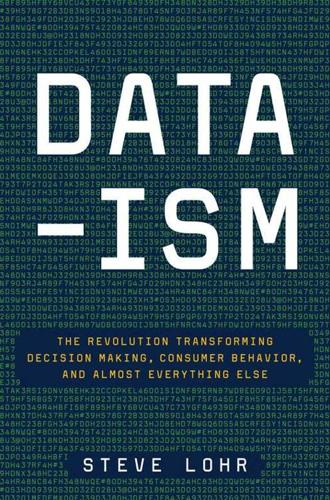
Data-Ism: The Revolution Transforming Decision Making, Consumer Behavior, and Almost Everything Else
by
Steve Lohr
Published 10 Mar 2015
Mark and Bernd Girod, the Stanford director of the institute, are leading an innovative effort to use data tools in storytelling and public policy. At Columbia, my workspace was in the career services office, and my thanks to the professionals there for kindly making the accommodation: Julie Hartenstein, Gina Boubion, Anusha Shrivastava, Izabela Rutkowski, and, earlier, Jacqueline DeLaFuente. This is a book of narrative nonfiction. So I am especially thankful to the people who agreed to be interviewed, and showed the patience for follow-up and fact-checking inquiries. At the top of the list is Jeffrey Hammerbacher, who gave the most in time, thoughts, and candor. He not only went through many hours of interviews but also offered introductions to his parents, his wife, classmates from high school and college, and friends and work colleagues, past and present.
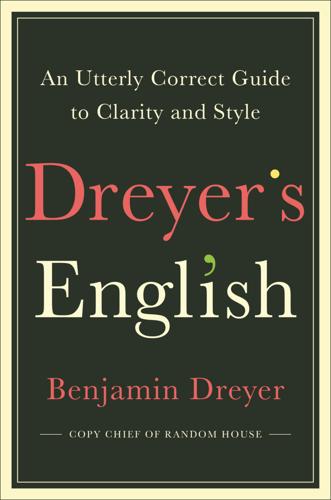
Dreyer's English: An Utterly Correct Guide to Clarity and Style
by
Benjamin Dreyer
Published 15 Jan 2019
” *2 At least she did not, as cataclysmically happened on one job I have firsthand knowledge of, tell the writer repeatedly that her protagonist wouldn’t, because it was out of character, do the thing she’d just done. (Note to copy editors: Never do this.) *3 Let’s please allow that I’m using the term “fiction” here to include as well the various flavors of narrative nonfiction that spring from a writer’s memory banks, rather than the kind of formal reportage that coalesces from years of archival research and sheaves of notes. *4 As a rule, the consumption of beverages is not as interesting as many writers seem to think it is. *5 It was a point of ongoing perturbation for me that two characters on the Downton Abbey series were both—pointlessly, so far as I could discern—named Thomas and that both their surnames began with a B
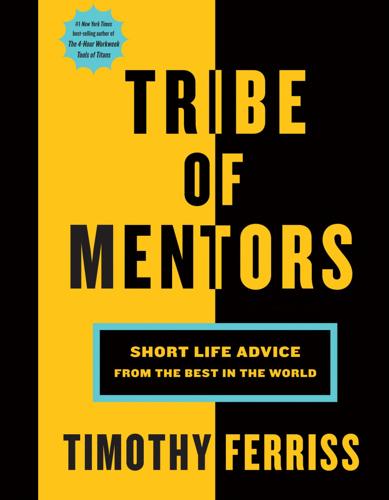
Tribe of Mentors: Short Life Advice From the Best in the World
by
Timothy Ferriss
Published 14 Jun 2017
“The disease of our times is that we live on the surface. We’re like the Platte River, a mile wide and an inch deep.” Steven Pressfield TW: @spressfield stevenpressfield.com STEVEN PRESSFIELD has made a professional life in five different writing arenas—advertising, screenwriting, fiction, narrative nonfiction, and self-help. He is the best-selling author of The Legend of Bagger Vance, Gates of Fire, The Afghan Campaign, and The Lion’s Gate, as well as the cult classics on creativity, The War of Art, Turning Pro, and Do the Work. His Wednesday column on stevenpressfield.com is one of the most popular series about writing on the web
…
The Beginning of Infinity by David Deutsch greatly expanded my sense of the potential power of human knowledge, while Nick Bostrom’s Superintelligence made me worry that machine knowledge could ruin everything. I strongly recommend both books. But if you just want to forget about the future and lose yourself in the book that forever changed how narrative nonfiction is written, read In Cold Blood by Truman Capote. What purchase of $100 or less has most positively impacted your life in the last six months (or in recent memory)? I found a great sleeve for my computer made by WaterField Designs (MacBook SleeveCase, $69). It is so well made that I carry my computer with me much more than I used to, and this has led to some very satisfying sessions of work in public places.

Cabin Fever: The Harrowing Journey of a Cruise Ship at the Dawn of a Pandemic
by
Michael Smith
and
Jonathan Franklin
Published 14 Jul 2022
The danger, terror, sickness, death, and, in so many cases, hope and redemption that they experienced were critical to paint this portrait of human survival at the dawn of a terrifying pandemic. There are so many others to thank, including experts at the Centers for Disease Control and Prevention, Department of State diplomats, and harbor pilots, who all went above and beyond. To piece together this work of narrative nonfiction, we relied on dozens of interviews and thousands of pages of documents, many never before revealed. We gave the cruise lines and their executives ample opportunity to comment on material events, without success. This book would not have happened without the unwavering encouragement of our agent, George Lucas at InkWell Management.

The Great Wave: The Era of Radical Disruption and the Rise of the Outsider
by
Michiko Kakutani
Published 20 Feb 2024
There is “no novelist,” Wolfe wrote, “who will be remembered as the novelist who captured the Sixties in America, or even in New York, in the sense that Thackeray was the chronicler of London in the 1840’s and Balzac was the chronicler of Paris and all of France after the fall of the Empire.” It was a state of affairs, he added with a touch of glee, that opened the way for the sort of narrative nonfiction that became known as “the New Journalism,” which borrowed storytelling methods from the old-fashioned novel (careful scene construction, lots of overheard dialogue, and pictorial descriptions with plenty of “status details”) and which was practiced by the likes of himself, Joan Didion, Norman Mailer, and Gay Talese.

Skin in the Game: Hidden Asymmetries in Daily Life
by
Nassim Nicholas Taleb
Published 20 Feb 2018
Some books make you smell the spices. Since the discovery of the works of Duby, Braudel, Bloch, Ariès, et al., I have been unable to read conventional history books, say, a book on the Ottoman Empire that focuses on the sultans, without irritation. It feels like historians across the board are engaging in the repulsive “narrative nonfiction” style of The New Yorker. Other books: James Davidson’s Courtesans and Fishcakes, where you see how the Greeks ate bread with the left hand. Or Graham Robb’s The Discovery of France, which informs you that the French spoke little French in 1914. And many more. CHAPTER 15: THEY DON’T KNOW WHAT THEY ARE TALKING ABOUT WHEN THEY TALK ABOUT RELIGION fn1 The Egyptian Copts have been increasingly persecuted by Sunni Muslims, but the Coptic Church stands against the creation of a self-governing state somewhere in Egypt, using the argument that it was “not Christian” to want a political entity in this world.

Breaking Twitter: Elon Musk and the Most Controversial Corporate Takeover in History
by
Ben Mezrich
Published 6 Nov 2023
Interior book design by Timothy Shaner, NightandDayDesign.biz ISBNs: 9781538707593 (hardcover), 9781538707623 (ebook) E3-20230906-JV-NF-ORI Contents Cover Title Page Copyright Dedication A Note from Bestselling Author Ben Mezrich Prologue: November 29, 2022 PART ONE Chapter One: More Than Two Years Earlier, January 15, 2020 Chapter Two: March 25, 2022 Chapter Three: April 4, 2022 Chapter Four Chapter Five Chapter Six: June 16, 2022 Chapter Seven: October 4, 2022 Chapter Eight PART TWO Chapter Nine: October 26, 2022 Chapter Ten: October 27, 2022 Chapter Eleven Chapter Twelve: October 28, 2022 Chapter Thirteen: October 31, 2022 Chapter Fourteen: November 3, 2022 Chapter Fifteen: November 9, 2022 Chapter Sixteen: November 16, 2022 Chapter Seventeen: November 21, 2022 Chapter Eighteen: December 11, 2022 PART THREE Chapter Nineteen: December 11, 2022 Chapter Twenty: December 12, 2022 Chapter Twenty-One: December 13, 2022 Chapter Twenty-Two: December 17, 2022 Chapter Twenty-Three: December 18, 2022 Chapter Twenty-Four: December 20, 2022 Chapter Twenty-Five: February 13, 2023 Chapter Twenty-Six: February 25, 2023 Epilogue: April 20, 2023 Acknowledgments Discover More About the Author Also by Ben Mezrich Notes This is a work of creative, narrative nonfiction based on interviews and reporting done by the author. Some names and identifying details have been changed to protect the identity of certain parties, and some characters are composites reflecting characteristics of several individuals. Dialogue and some character perspectives have been reimagined, and the dates of some of the events have been adjusted or compressed to improve the narrative.
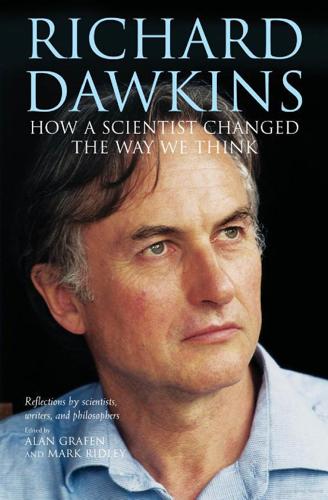
Richard Dawkins: How a Scientist Changed the Way We Think
by
Alan Grafen; Mark Ridley
Published 1 Jan 2006
The deflation began after the debacle of Murray Gell-Mann’s The Quark and the Jaguar (1994), which Brockman sold for an advance of $550,000 for American rights alone. Gell-Mann returned much of the advance after failing to complete the book as promised, though it did eventually come out. The next year the phenomenon was Longitude by Dava Sobel and narrative non-fiction, rather than argument, became all the rage. Cod, tulips, salt, and zero were the themes of the moment, not to mention, on a grander and more analytical scale, guns, germs, and steel. In recent years, even as his imitators swarmed, the master continued to dominate the lists. A Devil’s Chaplain and The Ancestor’s Tale effortlessly climbed the charts.

Cataloging the World: Paul Otlet and the Birth of the Information Age
by
Alex Wright
Published 6 Jun 2014
Rich Meislin and Laura Chang at the New York Times helped shape the November 2008 article that provided the initial spark for this book. My agent, Laurie Liss, saw the potential in that article for a book, and it is largely thanks to her gentle prodding that I embarked on this project in the first place. My teacher and friend Charles Strozier offered insightful critiques of my early drafts; his perspective on narrative nonfiction and the uses of historical context have 309 ACKNOWLEDGMENTS deeply influenced the direction of this book. My dear friend Mary Ann Caws volunteered her time and expertise in poring over Otlet’s often-indecipherable diary entries; I felt blessed to have such a masterful translator at my side.
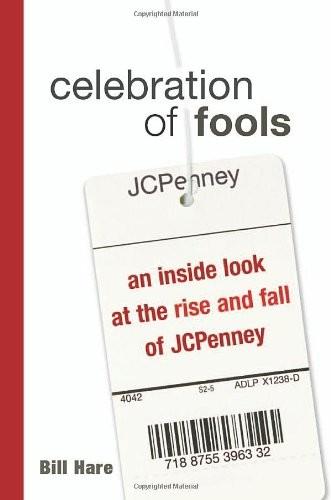
Celebration of Fools: An Inside Look at the Rise and Fall of JCPenney
by
Bill Hare
Published 30 May 2004
These pages end with two incidents in the spring and fall of 2000, when the new administration was just getting started. At that point in time the traditional J. C. Penney operation was rapidly becoming a thing of the past. To present a more engaging cautionary tale, this book is written as narrative nonfiction. That is, I have dramatized the resonant moments that befell the company rather than simply lay out dry facts. But, as explained later, all scenes are based upon the people and events that gave shape and substance to Penney's remarkable history. I have also occasionally compressed time to move the story along (without bending the historical record, however).
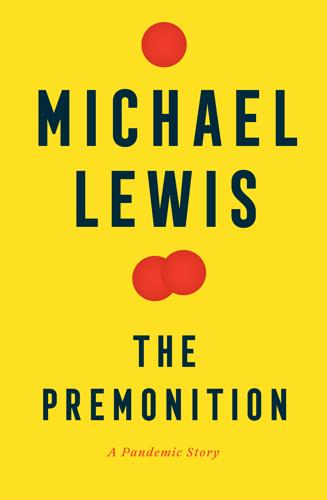
The Premonition: A Pandemic Story
by
Michael Lewis
Published 3 May 2021
All the other little clusters on the charts are of people who are interconnected in ways that might never have been revealed without the genomic information. “It’s amazing that all these stories fall into place,” said Joe, as he scrolled through that first chart they’d created. Science was now able to transform a novel coronavirus into little works of narrative nonfiction. Around the same time as the Mission study, up in Humboldt County a meth dealer had tested positive for COVID-19. The public-health nurses had gotten to him soon after he’d been infected, and he agreed to isolate himself. The nurses suspected he was still sneaking out at night, and suspected it even more when a friend of his became infected.
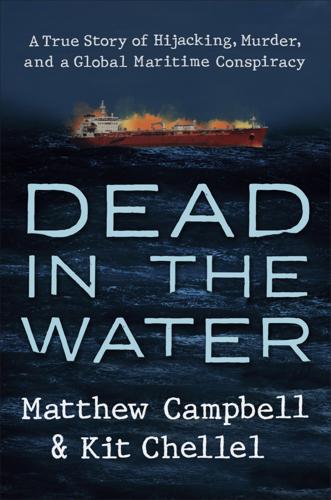
Dead in the Water: A True Story of Hijacking, Murder, and a Global Maritime Conspiracy
by
Matthew Campbell
and
Kit Chellel
Published 2 May 2022
Cam Simpson, Abigail Fielding-Smith, and Tom Finn shared wisdom and contacts. Kit’s friend Kosta was an invaluable consultant on matters of Greek language and culture. Greg and Lucas Jackson allowed their basement to be transformed into a writer’s den. And Kevin Baker brought some Hollywood glamour to the world of narrative nonfiction. When it came time to write, we were lucky to draw on the wisdom of Liam Vaughan and Tom Wright, who trod the path of executing complex, highly sensitive book projects long before we set off. Joel Lovell was a perceptive and unfailingly thorough first reader; that these pages make sense to anyone who hasn’t spent several years learning about shipping, salvage, and the workings of the Lloyd’s market is thanks in large part to him.
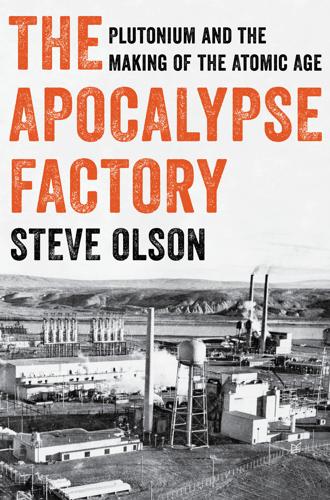
The Apocalypse Factory: Plutonium and the Making of the Atomic Age
by
Steve Olson
Published 28 Jul 2020
Many friends also offered much-needed advice and encouragement, including Joe Alper, Thomas Conkling, Gregg Easterbrook, Susan Feeney, Kevin Finneran, Donna Gerardi Riordan, Greg Graffin, David Jarmul, Marjorie Kittle, Jill Lawrence, Priscilla Long, Lisa Olson, Rick Olson, Dan Para, Blake and Connie Rodman, Eric Scigliano, Jack Shafer, Mark and Judith Stein, Umberto Vizcaino, and David Williams. I have dedicated this book to my wife, Lynn, without whom none of my books would have been written. I have also dedicated it to the memory of John Hersey, from whom I took a course on narrative nonfiction in 1978. Even now, sitting at my desk, I can hear his calm and patient voice offering me advice. NOTES The following notes refer to books, articles, publicly available interviews, and other documents listed in the bibliography. Documents only available in archives are described in full in the notes.
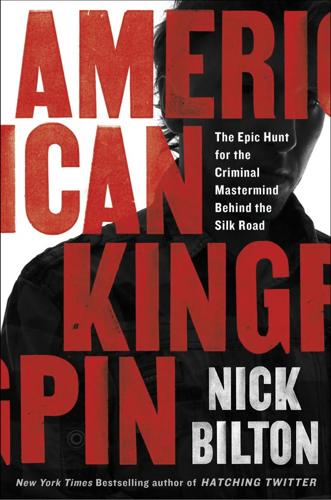
American Kingpin: The Epic Hunt for the Criminal Mastermind Behind the Silk Road
by
Nick Bilton
Published 15 Mar 2017
For the most minute details I used online weather almanacs to determine the temperature and wind on particular days, surf reports to understand the height of the waves, flight details to learn if there was turbulence on a plane, and old Craigslist ads, phone records, travel logs, and several other digital tools to tell this story as a narrative nonfiction tale. From the day of Ross’s arrest I was able to gain access to security camera footage of the front of the Glen Park library. Footage that captures Ross’s last moments as a free man. While so many people spoke to me for the book, through his family and lawyers, Ross Ulbricht declined to be interviewed.
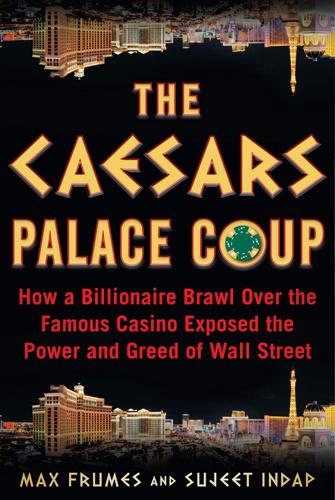
Palace Coup: The Billionaire Brawl Over the Bankrupt Caesars Gaming Empire
by
Sujeet Indap
and
Max Frumes
Published 16 Mar 2021
From the group of restructuring industry veterans who initially encouraged Max to write a book on distressed debt, the loudest voice belonged to Andrew Milgram. When the book was just a concept, Andy Kifer and Daniel Kurtz-Phelan offered their advice on putting together an actual proposal to get an agent. Hilary Claggett of the Rudy Agency was the only book agent willing to take Max on as a first-time author pushing narrative nonfiction on an esoteric business niche. Social media is part of our story, as the two of us met on Twitter discussing the Caesars case, and we ultimately decided to join forces on this book project. After more than a year and multiple proposal drafts later, Hilary found the single interested buyer of the project, Diversion Books.
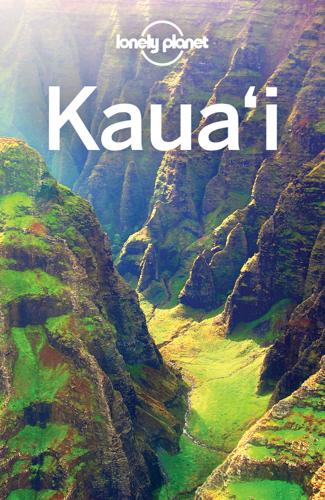
Lonely Planet Kauai
by
Lonely Planet
,
Adam Karlin
and
Greg Benchwick
Published 18 Sep 2017
These days he's an award winning journalist and travel writer who writes about travel, culture, human rights, sports and the environment for a variety of publications, including the New York Times, Playboy, Outside, BBC.com, Wired, ESPN.com, and Men's Health, and he's authored or co-authored over 35 Lonely Planet guidebooks. An avid open-water swimmer and diver, he's also the author of the critically acclaimed narrative nonfiction book, One Breath: Freediving, Death and the Quest to Shatter Human Limits. He lives in Malibu, California. Stay in Touch lonelyplanet.com/contact Australia Levels 2 & 3, 551 Swanston St, Carlton, Victoria 3053 %03 8379 8000, fax 03 8379 8111 Ireland Unit E, Digital Court, Rainsford St, Dublin 8, Ireland USA 124 Linden Street, Oakland, CA 94607 %510 250 6400, toll free 800 275 8555, fax 510 893 8572 UK 240 Blackfriars Road, London SE1 8NW %020 3771 5100, fax 020 3771 5101 twitter.com/lonelyplanet facebook.com/lonelyplanet instagram.com/lonelyplanet youtube.com/lonelyplanet lonelyplanet.com/newsletter Published by Lonely Planet Publications Pty Ltd ABN 36 005 607 983 3rd edition - September 2017 ISBN 9781787012035 © Lonely Planet 2017 Photographs © as indicated 2017 All rights reserved.

Waco: David Koresh, the Branch Davidians, and A Legacy of Rage
by
Jeff Guinn
Published 24 Jan 2023
Phillip Arnold, Rod Aydelotte, Blake Boteler, Bill Buford, Robert Champion, Sam Cohen, Keith Constantino, Dick DeGuerin, Dave DiBetta, Clive Doyle, Mike Duncan, Eric Evers, Paul Fatta, Vic Feazell, Guillermo Gallegos, Dudley Goff, Jack Grabowski, Rory Heisch, Phil Lewis, Scott Mabb, Carla Bell Mayfield, Kris Mayfield, Lyn Millner, Jerry Petrilli, Farris Rookstool III, Mike Russell, Byron Sage, Kathy Schroeder, Charlie Short, Carlton Stowers, Sean Sutcliffe, James Tabor, Michael Taylor, David Thibodeau, George Turner, Catherine Wessinger, Bob White, and Tommy Witherspoon. I had three lengthy long-distance telephone conversations with Branch Davidian and prolific author Livingstone Fagan. He found my questions “problematic.” But I appreciate the time he took. Archivists are the unsung heroes of narrative nonfiction. On this project, I’m grateful to the consummate professionals at the Baylor University Texas Collection in Waco (Benna Vaughn, Paul Fisher, Sylvia Hernandez, Geoff Hunt, Amie Oliver, Brian Simmons, Darryl Stuhr, and Stephen Bolech) and the Koreshan Collection at Florida Gulf Coast University in Fort Myers (Melissa Minds VandeBurgt, Bailey Rodgers, Vivianna Whalen, and Lexie Velte).
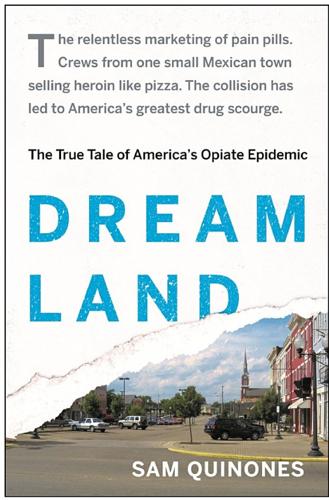
Dreamland: The True Tale of America's Opiate Epidemic
by
Sam Quinones
Published 20 Apr 2015
There I’ve listed, and linked to, many more resources—including recorded audio and video interviews and several relevant music videos on YouTube—that I used to tell this true tale. A Note on the Author Sam Quinones is a freelance journalist, author, and storyteller whose first two acclaimed books of narrative nonfiction about Mexico and Mexican immigration made him, according to the San Francisco Chronicle Book Review, “the most original writer on Mexico and the border.” He lives in Southern California. Contact him through his website, www.samquinones.com. By the Same Author Antonio’s Gun and Delfino’s Dream: True Tales of Mexican Migration True Tales from Another Mexico: The Lynch Mob, the Popsicle Kings, Chalino, and the Bronx Bloomsbury Press An imprint of Bloomsbury Publishing Plc 1385 Broadway 50 Bedford Square New York London NY 10018 WC1B 3DP USA UK www.bloomsbury.com BLOOMSBURY and the Diana logo are trademarks of Bloomsbury Publishing Plc First published 2015 This electronic edition published in April 2015 by Bloomsbury Publishing Plc © Sam Quinones 2015 Maps © Ortelius Design 2015 All rights reserved.

The Lion's Gate: On the Front Lines of the Six Day War
by
Steven Pressfield
Published 5 May 2014
Yet I have written “his” chapters in the first person, as if in his own words. Why am I calling this book “hybrid history”? Because I have elected in its composition to employ techniques from a number of disciplines—from journalism and academic history, from conventional nonfiction and narrative nonfiction, and from New Journalism. The Dayan chapters must be considered the latter. Dayan did not dictate these sentences into my tape recorder. They are not his testimony or his recounting of events. However, I have made every effort to be as true to the historical Moshe Dayan as my limitations of knowledge and imagination permit.
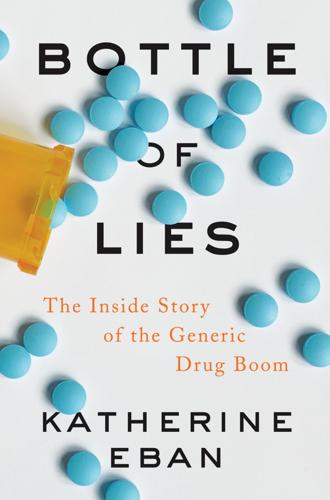
Bottle of Lies: The Inside Story of the Generic Drug Boom
by
Katherine Eban
Published 13 May 2019
Kelsey Kudak fact-checked this book with remarkable skill. Any remaining errors are my own. I am also grateful to a number of top-flight editors. Hilary Redmon, now at Penguin Random House, acquired this book for Ecco/HarperCollins, and gave vital early guidance. Domenica Alioto, a master of narrative nonfiction editing, helped to forge the book’s structure. At Ecco, I am indebted to Emma Janaskie, who skillfully edited the book and moved it into production. Additional thanks to the great team there: Daniel Halpern, Miriam Parker, Gabriella Doob, Meghan Deans, Caitlin Mulrooney-Lyski, and Rachel Meyers.

The Woman Who Smashed Codes: A True Story of Love, Spies, and the Unlikely Heroine Who Outwitted America's Enemies
by
Jason Fagone
Published 25 Sep 2017
I’m grateful for her sharp eye, her instincts, and her belief. Thanks also to Sean Newcott, Lynn Grady, and the rest of the team at Dey Street: Tom Pitoniak, Kendra Newton, Heidi Richter, Dale Rohrbaugh, Paula Szafranski, and Owen Corrigan. My agent, Larry Weissman. I am so glad to have the benefit of Larry’s counsel and his sensibility for narrative nonfiction. I feel the same about his unflappable partner, Sascha Alper. I can’t imagine writing books without their guidance and friendship. Librarians and archivists: This book would not exist without the archivists who preserved, indexed, and annotated the Friedmans’ files with such care. Paul Barron and Jeffrey Kozak at the George C.

Lonely Planet Mongolia (Travel Guide)
by
Lonely Planet
,
Trent Holden
,
Adam Karlin
,
Michael Kohn
,
Adam Skolnick
and
Thomas O'Malley
Published 1 Jul 2018
These days he's an award winning journalist and travel writer who writes about travel, culture, human rights, sports and the environment for a variety of publications, including the New York Times, Playboy, Outside, BBC.com, Wired, ESPN.com, and Men's Health, and he's authored or co-authored over 35 Lonely Planet guidebooks. An avid open water swimmer and diver, he's also the author of the critically acclaimed narrative nonfiction book, One Breath: Freediving, Death and the Quest to Shatter Human Limits and Indolirium. He lives in Malibu, California. IG: @adamskolnick Contributing Writers Dulmaa Enkhchuluun graduated from Augsburg College in Minnesota and now works to promote culturally and environmentally responsible tourism and commercial development in Mongolia.
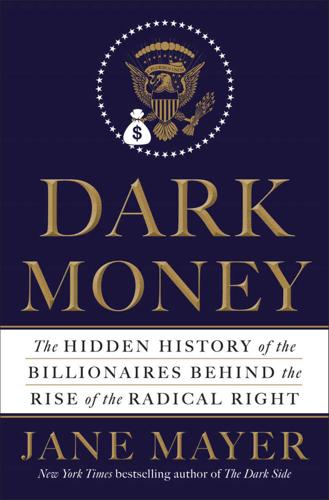
Dark Money: The Hidden History of the Billionaires Behind the Rise of the Radical Right
by
Jane Mayer
Published 19 Jan 2016
id=D000000186&year=2014. “We are doing all of this”: Fredreka Schouten, “Charles Koch: We’re Not in Politics to Boost Our Bottom Line,” USA Today, April 24, 2015. ABOUT THE AUTHOR Jane Mayer is a staff writer for The New Yorker and the author of three best-selling and critically acclaimed narrative nonfiction books. She co-authored Landslide: The Unmaking of the President, 1984–1988, with Doyle McManus, and Strange Justice: The Selling of Clarence Thomas, with Jill Abramson, which was a finalist for the National Book Award. Her book The Dark Side: The Inside Story of How the War on Terror Turned into a War on American Ideals, for which she was awarded a Guggenheim Fellowship, was named one of The New York Times’s Top 10 Books of the Year and won the J.
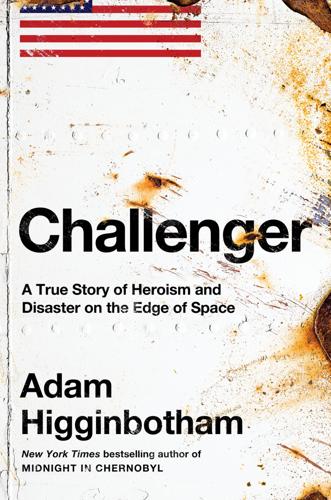
Challenger: A True Story of Heroism and Disaster on the Edge of Space
by
Adam Higginbotham
Published 14 May 2024
Finally, for their unwavering love and support through reporting setbacks and unexpected breakthroughs; unrelenting deadlines; abrupt disappearances to Florida, or Texas, or Arizona, or Maine; and the year spent confined in a one-size-fits-all apartment/office/school/vacation home amid growing drifts of government reports, press clippings, and interview transcripts, I cannot thank Vanessa Mobley, and our daughter, Isla, enough. Without them, none of this would be worthwhile. —New York, January 2024 NOTE ON SOURCES The published literature on the history of the Space Shuttle is extensive, and often overwhelmingly technical. To create a narrative nonfiction account of the Challenger story told from a human perspective, I drew upon my own interviews with eyewitnesses, existing first-person descriptions and memoirs, archival documents, and a comprehensive collection of oral histories that NASA began assembling more than fifty years ago. The recollections of the men and women I spoke to during my research were essential to establishing the world of NASA in the 1970s and ’80s, and the personalities and idiosyncrasies of those at the center of this story.
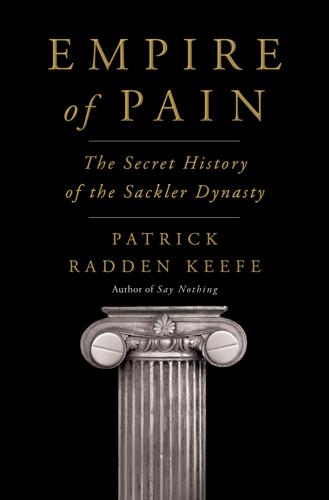
Empire of Pain: The Secret History of the Sackler Dynasty
by
Patrick Radden Keefe
Published 12 Apr 2021
Other times, I quote documents that I do not possess but that are referenced in legal filings; in such cases, I cite to the original document, to the extent that it is identified, and then add, “quoted in the Massachusetts Complaint” or the like, to make clear that I am relying on a characterization in court papers and do not have the underlying document myself. This is a work of narrative nonfiction: no details are invented or imagined; in instances in which I attribute thoughts or feelings to people, it is because they have described them to me or to someone else, or I am relying on a characterization by someone who knew them. I have employed pseudonyms in two instances: for Howard Udell’s legal secretary, whom I am calling Martha West, and for the man in the afterword whom I call Jeff.

The Rough Guide to New York City
by
Rough Guides
Published 21 May 2018
< Back to Contexts Books Since the number of books about or set in New York is so vast, what follows is necessarily selective – use it as a place to begin further sleuthing. Most of the books listed are currently in print, but those that aren’t should be available on websites such as abebooks.co.uk or amazon.co.uk. Essays, memoirs and narrative nonfiction Josh Alan Friedman Tales of Times Square. Expanded in 2007, the book chronicles activities on and around the square between 1978 and 1984, pornography’s golden age, documenting a culture under siege by impresarios, pimps and 25-cent thrills. William Grimes Appetite City: A Culinary History of New York.
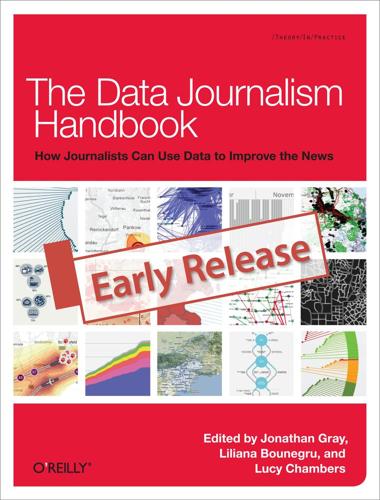
The Data Journalism Handbook
by
Jonathan Gray
,
Lucy Chambers
and
Liliana Bounegru
Published 9 May 2012
In an era of narrowly-focused media that is often tailored towards audiences with a particular point of view, data visualization (and data journalism in general) offers the tantalizing opportunity for storytelling that is above all driven by facts, not fanaticism. Moreover, like other forms of narrative journalism, data visualization can be effective for both breaking news—quickly imparting new information like the location of an accident and the number of casualties—and for feature stories, where it can go deeper into a topic and offer a new perspective, to help you see something familiar in a completely new way.
…
For more examples and suggestions, here is a list of different uses for visualizations, maps and interactive graphics compiled by Matthew Ericson of The New York Times. When Not To Use Data Visualization In the end, effective data visualization depends on good, clean, accurate, and meaningful information. Just as many good quotes, facts, and descriptions power good narrative journalism, data visualization is only as good as the data that fuels it. When your story can be better told through text or multimedia Sometimes the data alone does not tell the story in the most compelling way. While a simple chart illustrating a trend line or summary statistic can be useful, a narrative relating the real-world consequences of an issue can be more immediate and impactful to a reader.
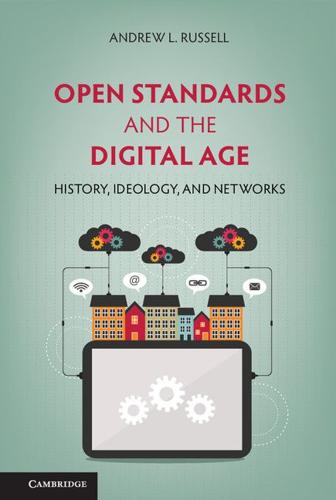
Open Standards and the Digital Age: History, Ideology, and Networks (Cambridge Studies in the Emergence of Global Enterprise)
by
Andrew L. Russell
Published 27 Apr 2014
Murphy, The International Organization for Standardization (ISO): Global Governance through Voluntary Consensus (New York: Routledge, 2008). 45 The following discussion draws on Carl Cargill, “Evolution and Revolution in Open Systems,” StandardView 2 (1994): 3–13; Jonathan Band, “Competing Definitions of ‘Openness’ in the NII,” in Brian Kahin and Janet Abbate, eds., Standards Policy for Information Infrastructure (Cambridge, MA: The MIT Press, 1995); Ken Krechmer, “Open Standards Requirements,” International Journal of IT Standards and Standardization Research 4 (2006): 43–61; Elliott Maxwell “Open Standards, Open Source, and Open Innovation: Harnessing the Benefits of Openness,” Innovations: Technology, Governance, Globalization 1 (2006): 119–176; Joel West, “Seeking Open Infrastructure: Contrasting Open Standards, Open Source, and Open Innovation,” First Monday 12 (June 2007), http://firstmonday.org/ojs/index.php/fm/article/view/1913/1795 (accessed September 16, 2013); Andrew Updegrove, “ICT Standards Today: A System Under Stress,” in Laura DeNardis, ed., Opening Standards: The Global Politics of Interoperability (Cambridge, MA: The MIT Press, 2011); and OpenStand, “The Modern Standards Paradigm – Five Key Principles,” http://open-stand.org/principles (accessed September 5, 2012). 46 American Engineering Standards Committee Year Book (New York: American Engineering Standards Committee, 1928), 68. 47 Kelty, Two Bits, 64–94. 48 For a complementary view of networking history, see Martin Campbell-Kelly and Daniel D. Garcia-Swartz, “The History of the Internet: The Missing Narratives,” Journal of Information Technology 28 (2013): 18–33. 2 Ideological Origins of Open Standards I: Telegraph and Engineering Standards, 1860s–1900s Americans of all ages, all conditions, and all dispositions constantly form associations. They have not only commercial and manufacturing companies, in which all take part, but associations of a thousand other kinds, religious, moral, serious, futile, general or restricted, enormous or diminutive….
…
Ceruzzi, A History of Modern Computing (Cambridge, MA: The MIT Press, 1998), 154–156; David Walden and Tom Van Vleck, eds., The Compatible Time Sharing System (1961–1973): Fiftieth Anniversary Commemorative Overview (Washington, DC: IEEE Computer Society, 2011); Martin Campbell-Kelly and Daniel D. Garcia-Swartz, “Economic Perspectives on the History of the Computer Time-Sharing Industry, 1965–1985,” IEEE Annals of the History of Computing 30 (2008): 16–36; Martin Campbell-Kelly and Daniel D. Garcia-Swartz, “The History of the Internet: The Missing Narratives,” Journal of Information Technology 28 (2013): 18–33. 14 The Arpanet’s history is well documented in Janet Abbate, Inventing the Internet (Cambridge, MA: The MIT Press, 1999); Norberg and O’Neill, Transforming Computer Technology; Katie Hafner and Matthew Lyon, Where Wizards Stay Up Late: The Origins of the Internet (New York: Simon & Schuster, 1996); and Peter H.
…
Cambridge, MA: The MIT Press, 2011. Büthe, Tim. “Engineering Uncontestedness? The Origin and Institutional Development of the International Electrotechnical Commission (IEC).” Business & Politics 12 (2010). Campbell-Kelly, Martin and Daniel D. Garcia-Swartz. “The History of the Internet: The Missing Narratives.” Journal of Information Technology 28 (2013): 18–33. Cargill, Carl. Open Systems Standardization: A Business Approach. Upper Saddle River, NJ: Prentice-Hall PTR, 1997. Castells, Manuel. The Rise of the Network Society. Cambridge, MA: Blackwell Publishers, 1996. Ceruzzi, Paul E. A History of Modern Computing.

Keep It Real: Everything You Need to Know About Researching and Writing Creative Nonfiction
by
Lee Gutkind
Published 1 Jan 2008
Or, storyless, it may spiral in on itself, circling the core of a single image or idea, without climax, without a paraphrasable theme. The lyric essay stalks its subject like quarry but is never content to merely explain or confess. It elucidates through the dance of its own delving.” In other words, when compared with conventional memoir or narrative journalism, the lyric essay is a prose horse of an entirely different color. The story of a lyric essay has less to do with what happened, when it happened, or whether it was the result of some action than with the author’s studying a thought, idea, or concept from numerous angles, turning it over and around, seeing what cognitive connections might arise.

Snowden's Box: Trust in the Age of Surveillance
by
Jessica Bruder
and
Dale Maharidge
Published 29 Mar 2020
With all those prohibitions, what would a pair of longform journalists be able to write about? I sent an email describing the conundrum to David Bralow, an attorney at First Look Media. It read: “Unfortunately, the restrictions preclude our taking notes and describing anything about the experience of querying the archive — practices at the heart of narrative journalism, which is our craft.” If we signed the agreement, legally, this book would no longer have the right to exist. So we didn’t. I called Laura. She was surprised. She told us that, when she’d approached Bralow and asked the Intercept to let us access the archive, she’d explained our role in the backstory.
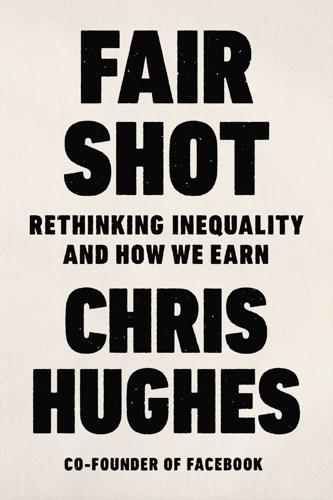
Fair Shot: Rethinking Inequality and How We Earn
by
Chris Hughes
Published 20 Feb 2018
Franklin Foer, who had edited The New Republic for a number of years earlier but was now an editor-at-large (a mostly symbolic title on the masthead), showed up at that first meeting and sat in the back of the room. I ran into him in the hallway afterward, and we connected immediately. Over the next few months, Frank and I met several times to discuss his previous tenure at The New Republic and our shared belief in the power of narrative journalism to shape the dialogue of the country. I liked that he had years of experience already in the editor role but I could see that he might bring a fresh creative energy to the work. The D.C.-born son of an antitrust lawyer, Frank was naturally suspicious of the concentration of power in the hands of elites, yet he also called many powerful people friends.

Made to Stick: Why Some Ideas Survive and Others Die
by
Chip Heath
and
Dan Heath
Published 18 Dec 2006
Researchers Melanie Green and Timothy Brock point out that attitudes formed by direct experience are more powerful, and stories give us the feeling of real experience. They show that people are more likely to be persuaded by a story when they are “transported” by it—when they feel more wrapped up in their mental simulation. See Melanie C. Green and Timothy C. Brock, “The Role of Transportation in the Persuasiveness of Public Narratives,” Journal of Personality and Social Psychology 79 (2000): 701–21. The new XER board configuration: Julian E. Orr, Talking About Machines: An Ethnography of a Modern Job (Ithaca, N.Y.: Cornell University Press, 1996). The dicorotron story is. “John put on his sweatshirt”: This study is among dozens of studies that support the importance of mental simulation.

Street Smart: The Rise of Cities and the Fall of Cars
by
Samuel I. Schwartz
Published 17 Aug 2015
Lind, William S., and Glen D. Bottoms. Expanding Public-Private Partnerships in Electric Railways: A Zero-Cost Conservative Proposal. Washington, DC: The American Conservative Center for Public Transportation, American Public Transportation Association, 2012, 1–31. Litman, Todd. “A New Transit Safety Narrative.” Journal of Public Transportation 17, no. 4 (December 2014): 114–135. ———. Evaluating Household Chauffeuring Burdens: Understanding Direct and Indirect Costs of Transporting Non-Drivers. 2015 TRB Annual Meeting. Washington, DC: Transportation Research Board, 2014. ———. The Mobility-Productivity Paradox.

Late Bloomers: The Power of Patience in a World Obsessed With Early Achievement
by
Rich Karlgaard
Published 15 Apr 2019
Crossley, Introducing Narrative Psychology: Self, Trauma, and the Construction of Meaning (Philadelphia: Open University Press, 2000); and Michele L. Crossley, “Narrative Psychology, Trauma and the Study of Self/Identity,” Theory and Psychology 10, no. 4 (2000): 527–46. Dozens of studies: James W. Pennebaker and Janel D. Seagal, “Forming a Story: The Health Benefits of Narrative,” Journal of Clinical Psychology 55, no. 10 (1999): 1243–54. a story doesn’t have to be true: Keith Oatley, Such Stuff as Dreams: The Psychology of Fiction (Hoboken, NJ: John Wiley & Sons, 2011); Raymond A. Mar and Keith Oatley, “The Function of Fiction Is the Abstraction and Simulation of Social Experience,” Perspectives on Psychological Science 3, no. 3 (2008): 173–92; Keith Oatley, “A Taxonomy of the Emotions of Literary Response and a Theory of Identification in Fictional Narrative,” Poetics 23, no. 1 (1994): 53–74; Keith Oatley, “Why Fiction May Be Twice as True as Fact: Fiction as Cognitive and Emotional Simulation,” Review of General Psychology 3, no. 2 (1999): 101; Raymond A.
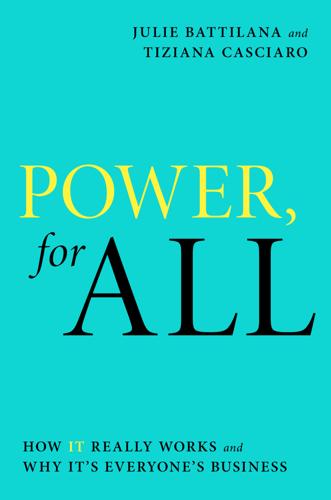
Power, for All: How It Really Works and Why It's Everyone's Business
by
Julie Battilana
and
Tiziana Casciaro
Published 30 Aug 2021
Doug McAdam, Joseph McCarthy, and Meyer Zald, (Cambridge, UK: Cambridge University Press, 1996): 41–61; Charles Tilly, From Mobilization to Revolution (Reading, MA: Addison-Wesley, 1978). 33 Han, How Organizations Develop Activists. 34 Argentina is one of the few countries in the world to have granted the Universal Declaration of Human Rights, along with other human rights–centered international agreements, constitutional status, complementing the other rights guaranteed by the national constitution. 35 Omar G. Encarnación, Out in the Periphery: Latin America’s Gay Rights Revolution (New York: Oxford University Press, 2016). 36 Melanie C. Green and Timothy C. Brock, “The Role of Transportation in the Persuasiveness of Public Narratives,” Journal of Personality and Social Psychology 79, no. 5 (2000): 701–21. 37 Ryann Manning, Julie Battilana, and Lakshmi Ramarajan, “Up for Interpretation: How Audiences’ Unexpected Responses Threaten Social Movement Identities,” Academy of Management Annual Meeting Proceedings (October 2014). 38 Manning, Battilana, and Ramarajan, “Up for Interpretation.” 39 Encarnación, Out in the Periphery, 146. 40 Monica Anderson and Skye Toor, “How Social Media Users Have Discussed Sexual Harassment since #MeToo Went Viral,” Pew Research Center, October 11, 2018; Benedetta Faedi Duramy, “#MeToo and the Pursuit of Women’s International Human Rights,” University of San Francisco Law Review 54, no. 2 (2020): 215–68. 41 Tarana Burke in discussion with the authors, February 2020. 42 Scholar Ronald A.

Daughter Detox: Recovering From an Unloving Mother and Reclaiming Your Life
by
Peg Streep
Published 14 May 2017
R EFERENCES Introduction Kross, Ethan, Ozlem Ayduk, and Walter Mischel. When Asking “Why” Does Not Hurt: Distinguishing Rumination from Reflective Processing of Negative Emotions. Psychological Science , 2005, vol. 16(9), pp. 709-715. Pennebaker, James W., and Janel D. Segal. Forming a Story: The Health Benefits of Narrative. Journal of Clinical Psychology , 1999, vol. 55(10), pp. 1243-1254. 1. The Truth About Maternal Power Adamson, Lauren B., and Janet E. Frick. The Still Face: A History of a Shared Experimental Paradigm. Infancy , 2003, vol. 4(4), pp. 451-473. Adolph, Karen E., and Kari S. Kretch. Infants on the Edge: Beyond the Visual Cliff, in Developmental Psychology , edited by Alan M.
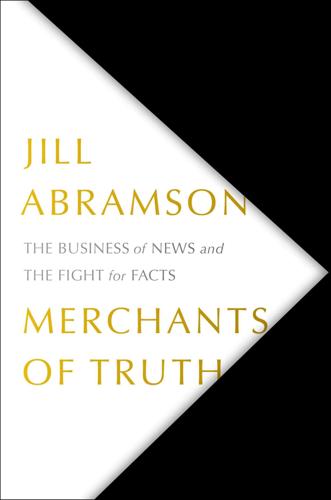
Merchants of Truth: The Business of News and the Fight for Facts
by
Jill Abramson
Published 5 Feb 2019
In 2002 he created a commercial for the Swedish dorm-room DIY furniture chain, Ikea, that became an instant cult classic. Silly as it was, the Ikea ad, created by Crispin Porter + Bogusky and directed by Jonze, illustrated the power of basic storytelling, and brands loved it. Like Peretti at BuzzFeed, Jonze was on the frontier of a new form of “native advertising” that mimicked narrative journalism and movies. Vice too was soon signing clients to six-figure contracts. • • • The dawn of web publishing brought with it the unbundling of the newspaper package. Readers who had once been forced to purchase the entire paper to access any of its contents no longer faced that all-or-nothing choice.
…
I worked closely with the multimedia editors, Andrew DeVigal and Aron Pilhofer, who did data and social media and who both felt pushed to the side of the news operation. Now I was seeing firsthand how video and data brought journalism to life, especially in a series about a military unit returning from the Afghanistan war. At a narrative journalism conference at Boston University, after I showed a video clip of a soldier on leave taking his sons to a barber to get the same buzz cut he had, hard-bitten editors in the audience were crying. After the Times received the massive Wikileaks files, Pilhofer, an expert on storing and housing data, was the first editor I consulted in order to make the material searchable.
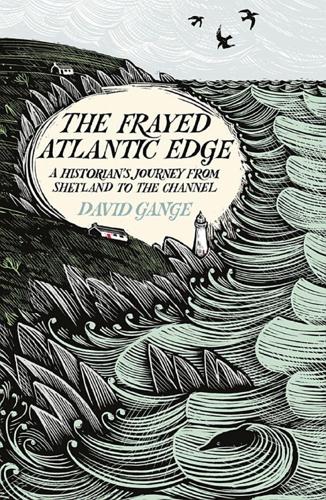
The Frayed Atlantic Edge: A Historian’s Journey From Shetland to the Channel
by
David Gange
Published 10 Jul 2019
Unfortunately, cross-fertilisation between these cultural histories and environmental history is still stymied by a difference in what kinds of historical explanation each finds compelling. There have been attempts by environmental historians to think through the power of narrative, such as William Cronon, ‘A Place for Stories: Nature, History and Narrative’, Journal of American History (1992), though they still tend to read like caricatures of more cultural approaches. History currently feels like a discipline in which all the ingredients are at hand for transcendence beyond nineteenth-century national, Cartesian and anthropocentric frameworks: the creation from these ingredients of new modes of thinking and writing feels overdue but imminent.

Digital Apollo: Human and Machine in Spaceflight
by
David A. Mindell
Published 3 Apr 2008
R-241. Cambridge, Mass.: MIT Instrumentation Laboratory, September 1961, revised May 1962. Battin, R. H. ‘‘Some Funny Things Happened on the Way to the Moon.’’ In Proceedings of the AIAA 27th Aerospace Sciences Meeting. Reno, Nev.: AIAA, 1989. Battin, R. H. ‘‘Space Guidance Evolution—A Personal Narrative.’’ Journal of Guidance, Control, and Dynamics 5, no. 2 (1982): 97–110. Bean, Alan, and Andrew Chaikin. Apollo: An Eyewitness Account by Astronaut/Explorer Artist/Moonwalker Alan Bean. Shelton, Conn.: Greenwich Workshop Press, 1998. Bean, Alan, and Beverly Fraknoi. My Life as an Astronaut. New York: Pocket Books, 1988.
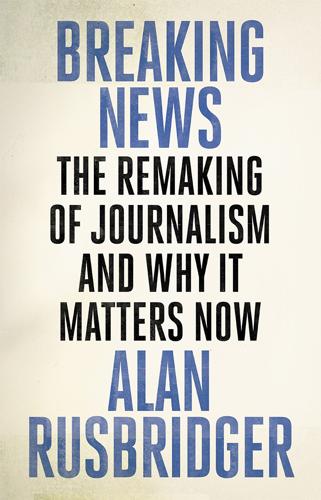
Breaking News: The Remaking of Journalism and Why It Matters Now
by
Alan Rusbridger
Published 14 Oct 2018
He began a weekly column the following year in the same way – a confession of personal ignorance on the subject he was about to address. His initial pitch to his projected subjects was blunt: everyone hates you, anyway – why not let me understand and explain in a way conventional journalism might struggle to? Mix an immensely complex subject with the internet, narrative journalism and anthropological fieldwork . . . and something interesting might emerge at the other end. It did. His columns over the next two years humanised the world of finance more than anything else I’d read. At the end of it I understood the processes, motivations, codes, frailties, hubris, chutzpah, isolation, hierarchies, addictions, relationships and risks of the City of London far better from him than from anything I had derived from the financial pages.

The Rise and Fall of Modern Medicine
by
M. D. James le Fanu M. D.
Published 1 Jan 1999
Corcoran et al., ‘Lithium Poisoning from the Use of Salt Substitutes’, JAMA, 1949, Vol. 139, pp. 685–8. 8.Mogens Schou, ‘Lithium: Personal Reminiscences’, Psychiatric Journal of the University of Ottawa, 1989, Vol. 14, pp. 260–2. 9.Roland Kuhn, Schweizerisch Medizinisch Wochenschrift, 1957, Vol. 87, pp. 1135–40. 10.A. Todrick, ‘Imipramine and 5HT Reuptake Inhibition: A Narrative’, Journal of Psychopharmacology, 1991, Vol. 5, pp. 263–7. 11.Brian B. Molloy, ‘The Discovery of Fluoxetine’, Pharmaceutical News, 1994, Vol. 1, pp. 6–10. 12.Merton Sandler, ‘Monoamine Oxidase Inhibitors in Depression: History and Mythology’, Journal of Psychopharmacology, 1990, Vol. 4, pp. 136–9. See also G.
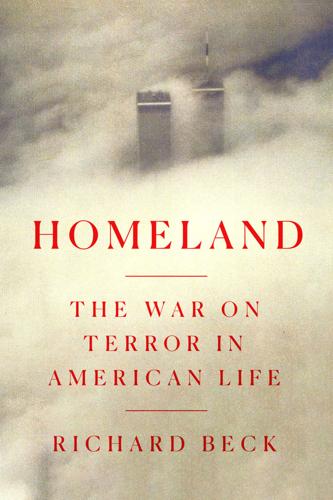
Homeland: The War on Terror in American Life
by
Richard Beck
Published 2 Sep 2024
But even if individual writers at centrist and liberal publications didn’t want to join in on the orgy of bloodthirsty jingoism that characterized conservative media, they still displayed a striking reluctance to oppose an administration that many of them had been happy to criticize for the first eight months of its existence. In places like The New York Times and The New Yorker, the Iraq debate was dominated by a group of ostentatiously reluctant hawks. When one surveys the editorials, symposia, panel discussions, and narrative journalism this group produced in 2002 and 2003, the consistency of tone is remarkable. Almost without exception (the exception is Christopher Hitchens), liberal support for the invasion was solemn, even melancholy, accented with flourishes of moral seriousness and high-minded anger directed toward the antiwar left.